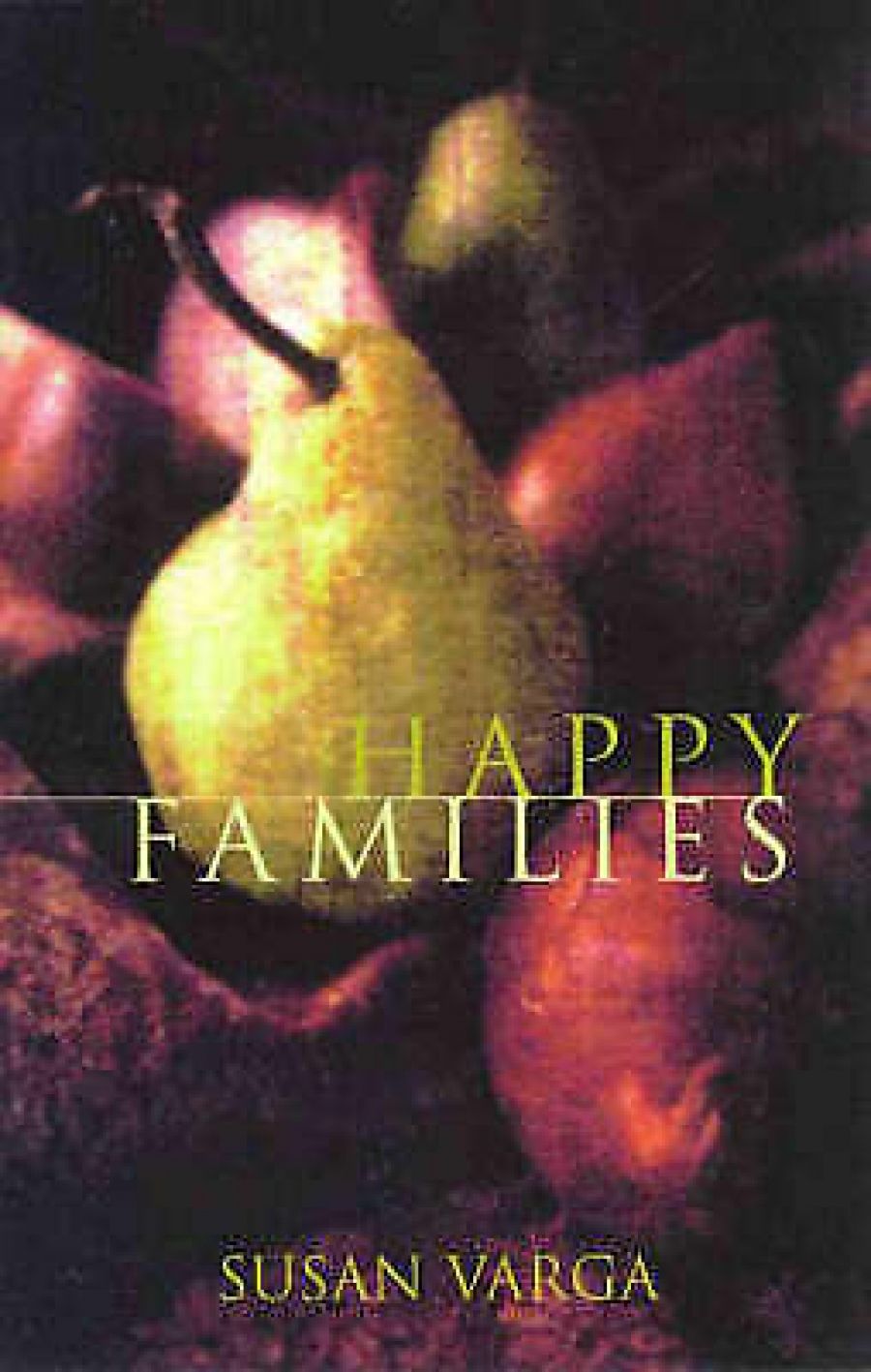
- Free Article: No
- Contents Category: Fiction
- Review Article: Yes
- Online Only: No
- Custom Highlight Text:
During my reading of Susan Varga’s first work of fiction, Happy Families, I was drawn back into the fields of family and emotion as offered in the two recent American films: The Ice Storm and Six Degrees of Separation. Each of these works hard at tracking the intricacies of humans connecting and communicating, the tectonics of family and emotional landscapes. Happy Families shows us, up close, mothers and daughters, aunts and grandchildren and cousins, lovers and spouses and neighbours. The drive of the work is, as with the two films cited, about how trauma is carried in the body, how we try and trick ourselves about recoveries. And, to a lesser extent, how we integrate the apprehension of difference into our experience of walking through the world. Varga’s novel is one of restitution and connection.
- Book 1 Title: Happy Families
- Book 1 Biblio: Hodder Headline Sceptre, $22.95 pb, 267 pp
It is, of course, not necessary to have pre-read Varga’s previous book, the acclaimed Heddy and Me, published in 1994, but it became for me a filter as well as a map for reading this novel. It was my means of approach, my reference point for the larger questions that absorb me about modes of telling stories and the multiplicity of approaches. Thus, I do not want to resile from the added layer, that texturing, available to me through Heddy and Me, although I acknowledge that it might not necessarily ‘fit’ within the review of a new book. The two books don’t work in a sequential relation for a reader, and this novel is not autobiographical fiction, but are both working with a common store of ideas, with the emotional range of things left unsaid, edited out of the life of individuals and families. They are both books about the legacies of loss. So, forgive my transgression of welcoming in the older book to this discussion.
The novel circles around a set of delicately kept secrets, held tightly by their owners so that they become repressive weights. It is a novel of connection, of intertwining, and of the chances for clearing spaces to move on into. Varga offers an optimistic edge in building her character; this is despite the intense pain they suffer in recollection or in mute silence.
What impresses me the most about Happy Families is its mixing up of ephemeral and everyday gestures with the baggage of unspeakable pain: an observing eye that carries the narrative around and in a forward motion and allows a seeping of compassion through its authorial voice. The world of an old woman surrounded by phantasms, at first stuck in the drama of her family-of-origin, shifts into her own responsibilities and burdens with the arrival of new people in her life. One of them is a kid, a boy of seven called Kenny, who is both needy and attentive and has the capacity to take on multiple mother figures. He becomes a key figure in the lives of several of the characters and is drawn by Varga with great charm.
What surprised me the most about Happy Families, given my knowledge and admiration of Varga’s previous book, is the conventional way it is structured and told. Heddy and Me is a book that mixes up modes, is bold in its innovation and its way of telling. This isn’t a criticism of the new novel; it is an observation about the choices that are made by a writer facing her material. This is where my reference to Fred Schepisi’s film Six Degrees of Separation comes from: a panorama of characters from such a range of places and positions, all of them making connections with each other in the course of the novel’s progress. Varga chooses to keep hold of this progress by crisscrossing and weaving between them, keeping an eye on them with a bit of distance. It works, but still I am interested in what is required in narrative when thinking through the twin projects of fiction and that other earlier form.
The existence of precious passports, that painful cache of photographs of a dead family, the ideas of the war, Hungary, death-camps, and new lives afterwards in Australia becomes the centrepiece of the novel. This is one of the pressure points requiring reconciliation for a mother, daughter, granddaughter and niece. The power of the image is everything: those photographs carry the loss and, when expunged, can deny the loss.
Characters in the novel go in deep, usually back into a generation earlier than anticipated when they investigate their grief. Susan Varga is a careful novelist: always tender with her representations of such loss.


Comments powered by CComment